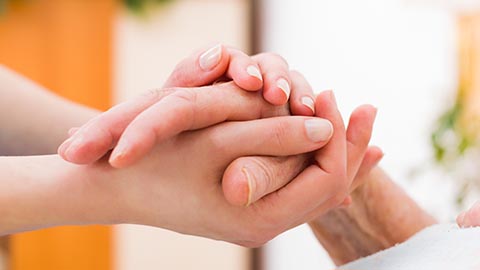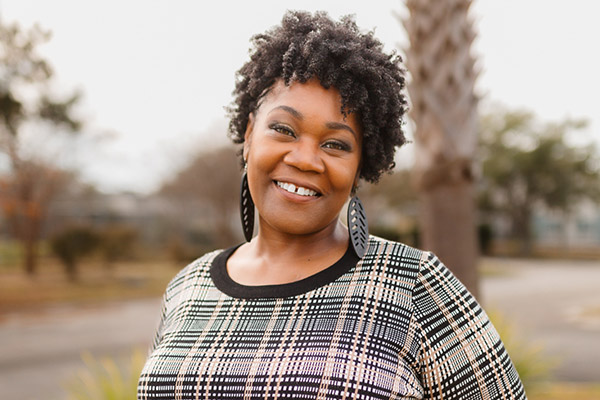07/31/2020

Ruth Werner discusses the complex overlap of conditions in a longtime client: already affected by heart disease and diabetes, this client now has developed essential tremor. Is there a safe way to help him, given his medical history? How do we balance all the variables in this situation to offer safe, effective massage? What kinds of work might be most helpful? What, if anything, does the research say? You might be surprised.


This episode sponsored by Anatomy Trains, Yomassage, and Books of Discovery.
00:00 Speaker 1: Ruth Werner's best-selling book, A Massage Therapist's Guide to Pathology, is a highly regarded comprehensive resource that sets the standard for Pathology Education. Written for massage therapy students and practitioners, this ground-breaking resource serves up a comprehensive review of the pathophysiology, signs, symptoms and treatment of more than 500 diseases and disorders. Learn more at booksofdiscovery.com.
[music]
00:39 Ruth Werner: Hi and welcome to I Have a Client Who, Pathology conversations with Ruth Werner, the podcast where I will discuss your real-life stories about clients with conditions that are perplexing or confusing. I'm Ruth Werner, author of A Massage Therapist's Guide to Pathology, and I have spent decades studying, writing about, and teaching about where massage therapy intersects with diseases and conditions that might limit our client's health. We almost always have something good to offer even with our most challenged clients, but we need to figure out a way to do that safely, effectively, and within our scope of practice. And sometimes, as we have all learned that is harder than it looks.
01:24 RW: In this episode, we have a wonderful long-time client, but he has a complicated and overlapping set of conditions and recently added a new one to the mix. This comes from a massage therapist in Massachusetts who says, "I have a client who I've been seeing for over 14 years. He's about 60 and he has a history of heart attacks and heart surgery. He also has diabetes and he uses insulin. He's overweight but he's been fairly active as an auto mechanic. He just retired this year and now his main physical activity is two to three mellow miles of walking his dog each day."
02:07 RW: "I already do fairly light work with him, very gentle leg massage provides big relief to his end of the day puffy ankles and lower legs, and he really likes that. However, he has recently started shaking his hands, mostly one side is worse than the other. The first doctor said Parkinson's disease, but the specialist says essential tremor. Light to medium pressure massage to his forearms provide some relief from the very tired and sore muscles that make his hands shake. The shaking dramatically slowed and even stopped for a few minutes during the massage, and it was less pronounced for a few hours afterwards. Should I be doing anything differently with him?"
02:50 RW: "His massage is already light due to the cardiac and diabetes issues. Can massage actually help with essential tremors? Is there a certain technique that I should be trying?" So I wanna start off, as I always do, by saying thanks so much to this massage therapist. I can tell from her tone that she is deeply fond of this client and wants to offer him some relief if she can. I also wanna remind listeners that you can send me your I have a client who stories at ihaveaclientwho@abmp.com, that's ihaveaclientwho, all one word, all lowercase @abmp.com.
03:30 RW: So let's talk about our auto mechanic. We don't have a lot of information here, but given his history with cardiovascular disease, heart surgery, and diabetes, it's a safe bet that he is under ongoing medical supervision. We know he's using insulin, and my educated guess is that he may also be using meds for hypertension or some kind of cardiovascular support, and that can sometimes contribute to edema in the legs, which is improved by this massage therapist's gentle massage. But to add a whole extra layer to his pretty complicated health picture, now he has shaking in his hands.
04:12 RW: It's great that we have a specialist's diagnosis to start with here, and if you have to make a choice between having Parkinson's disease and having essential tremor, essential tremor is definitely preferable. So let's take a look at this condition and where massage might fit, especially with the underlying issues of diabetes and cardiovascular disease. To get us started, let's define tremor. It has a specific definition. The term tremor refers to involuntary oscillating movements on a fixed plane. That means there's a back and forth movement of some part of the body and with essential tremor that's usually at the wrist as monitored by musculature in the flexor compartment and the extensor compartment of the forearm.
05:00 RW: It oscillates, it goes back and forth, and it's on a fixed plane, it is only inflection and extension, and this fixed plane part of the tremor distinguishes it from other movement disorders like dystonia, for instance, where there might be involuntary movements on several planes. With tremor, with essential tremor, in particular, it's on a fixed plane. It's a really common condition. It affects about 10 million people in the United States, and a lot of those people show some kind of familial connection, so there seems to be some kind of genetic component to who's going to develop essential tremor.
05:41 RW: This is an idiopathic disease. We don't know what its contributing factors are. We don't know the details of whatever is happening in the brain that causes this oscillating contraction of antagonistic muscles. We do know that it is almost always bilateral, although one side tends to be worse than the other. It can be in legs or feet, more often we see it in the forearms and sometimes in the head or neck. Essential tremor can be worse in the morning for some people, and with other people, it gets worse as they get tired and the day progresses, so it gets worse over the course of the day, and with some people, it really gets bad when they're under particularly high levels of stress.
06:30 RW: It can range from being a mild annoyance to being potentially really debilitating and in particular, when we see essential tremor and it is gradually progressive, and it gets worse and worse in... When this happens in seniors, what we see is a tendency for people to isolate because they don't wanna be seen in public. They don't wanna go to a restaurant where they might spill their food. They can't control their emotions very well, and when people isolate themselves away from others, we see that that has a negative impact on other parts of their health as well.
07:09 RW: So it would be great if there were a simple way to intervene with essential tremor. Unfortunately, our treatment options for this are really pretty limited. One of the treatment options for essential tremor is moderate alcohol consumption. So some people find that moderate alcohol consumption helps them to control their tremor. I wouldn't recommend this as a first choice necessarily for our auto mechanic, given his history with diabetes and heart disease. There are some other medications including beta blockers, which is interesting because that's a medication often used for people who have hypertension and heart disease.
07:47 RW: Some people are prescribed tranquilizers or anti-seizure medications or Botox injections, that's usually if the affected musculature is in the neck, but if none of these non-invasive or low invasive interventions really help, and if the tremor is bad enough to really interfere in a person's quality of life, then there's a brain surgery that might be considered, and this involves implanting a device in the part of the brain that helps to control movement. I have only ever interviewed one person who had had this done and it was a mixed success. But I would say it's probably safe to say that that's not the kind of thing that has to happen very often.
08:32 RW: So that's a little bit of background about tremor. The question, of course, that this massage therapist has is, are there specific things she can do to be helpful and are there any risks in applying different kinds of massage for someone who already has these underlying conditions of heart disease and diabetes? So the answer to that second question, I think we can dispense with relatively quickly, essential tremor is a central nervous system disorder that has impact in the musculature, but it does not affect the function of the cardiovascular system, and to treat it with manual therapies would not necessarily put any really distinctive extra load on the cardiovascular system, so I am not especially worried about massage for this client based on his diabetes or his heart disease, given that he is already under medical supervision, and we know he's not at risk for things that are more serious getting by us and having us not paying appropriate attention to them.
09:37 RW: There is almost no research about massage therapy for clients who have essential tremor. There is one lovely case report, and I will put a link to it in the show notes. I love this case report. In this the therapist had a client who was a woman with essential tremor, and her theory was that a big contributor to the symptoms was stress, and so she worked with really focusing on eliciting a parasympathetic response, and she used a lot of different sort of techniques and approaches to do that and had some success. And one of the ways that she tracked her progress that I thought was particularly beautiful was she had her client with the arm that was most severely affected, draw spirals, one before her massage and one after massage, so that it was possible to compare her fine motor skills in relation to having this intervention on her nerve dysfunction. It's a beautiful case report and I really recommend that you take a look at it, especially, if you have clients who have essential tremor.
10:43 RW: So the short answer to the question, what should I be doing for my client with essential tremor is anything that works. And if your client is into it and wants to experiment, I recommend trying all kinds of different things that are within his pain tolerance and within any cautions or restrictions you might feel in relation to his heart disease or his diabetes. So of course, we wanna make sure, for instance, that his sensation is really solid and accurate and he's not having swelling after your treatments or anything negative like that. But you could try neuromuscular technique, you could try deep draining, you could try pin and stretch, you could try muscle energy techniques, you could try all kinds of interesting fun things, track your results and see if you don't find some particular approach or combination of techniques that makes some substantial difference in his experience of his tremor, and then write down what you did and share it with the world. There are 10 million people in the United States who have essential tremor.
11:49 RW: Lots of them get massage and there's a lot of massage therapists who would like to be able to help. So here's an opportunity, if you can help us with that, I would love to support you in doing that. Thanks for contributing. And that's what I have to say about essential tremor.
12:06 RW: Hey everybody, thanks for listening to I Have a Client Who, Pathology conversations with Ruth Werner. Remember, you can send me your I Have a Client Who stories to ihaveaclientwho@abmp.com, that's ihaveaclientwho, all one word, all lowercase, @abmp.com. I can't wait to see what you send me and I'll see you next time.
12:36 S1: Yomassage is now offering ABMP Podcast listeners $100 off their 25-hour certification from now until September 1st with the code ABMP100. Don't miss this opportunity to take advantage of the biggest discount Yomassage has ever offered. Yomassage is revolutionizing the wellness industry by combining therapeutic touch, mindfulness, and restorative stretch. Take your career to the next level and become a certified Yomassage therapist. Learn more at yomassage.com.
13:15 S1: Anatomy Trains is excited to invite you to intro to craniosacral therapy, live online with Lauren Christman, August 8th and 9th. This eight-hour live online course introduces basic craniosacral principles and methods, giving you a taste of this work within a structural bodywork approach. You'll receive a general overview of the anatomy and physiology of craniosacral therapy and practice techniques to develop sensitive hands and the inner stillness that anchors this healing art, the perfect skill to add to your toolkit to help clients relax in stressful times. Visit anatomytrains.com and click on Advanced Summer Courses for details.





